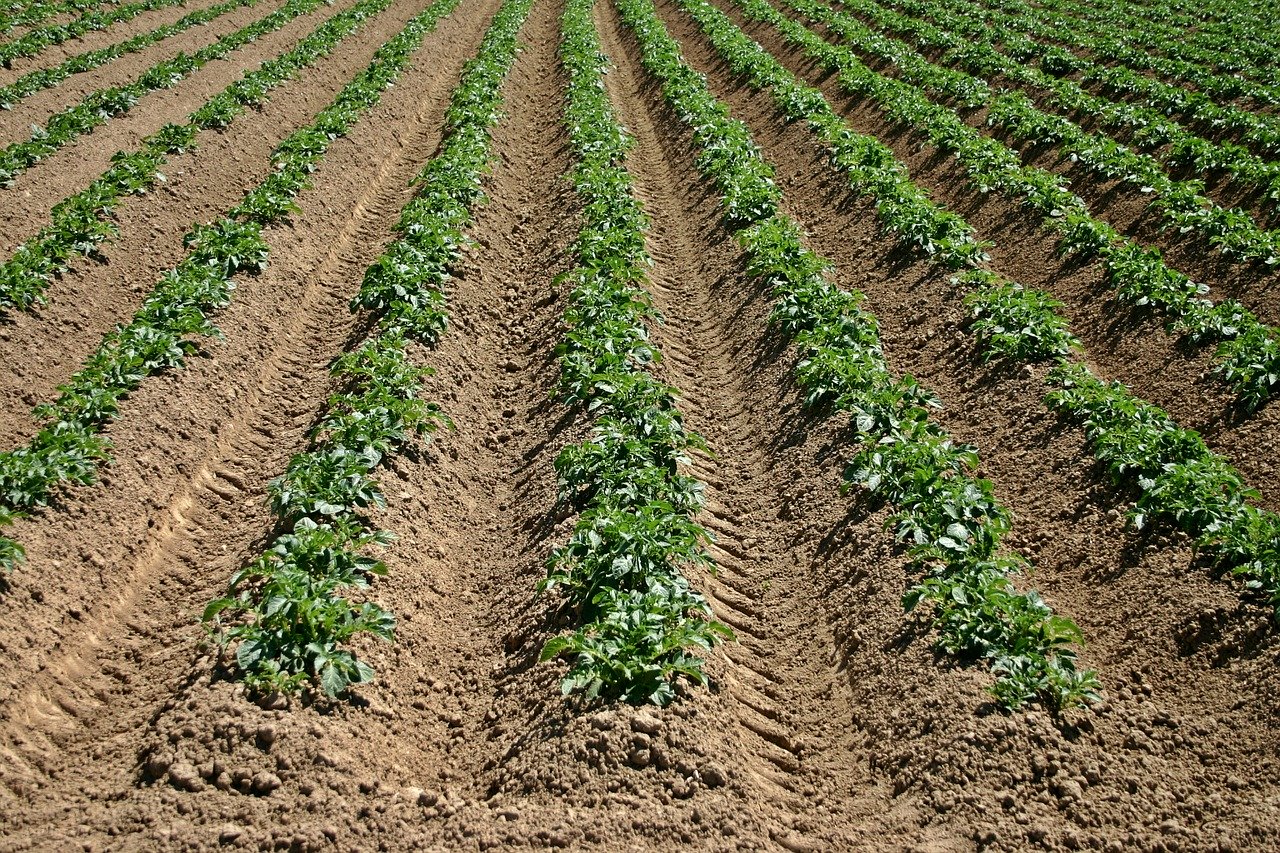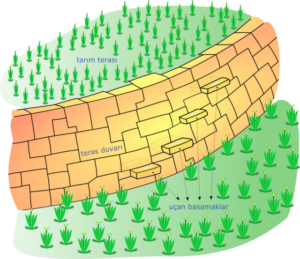Soil Degradation & Mitigation Techniques: A Means to Economic Success
Alison Waterhouse
Introduction
In this commentary, the economic loss due to soil degradation is explored. With climate change causing more frequent and severe droughts, there is an increased risk of instability within agriculture production. Managing soil and soil water is vital within the agriculture industry to ensure the highest revenue. Soil loss would result in reduced land productivity, food security, water retention, and biodiversity (Xiong et al., 2018). One of the main causes of soil loss is erosion. Erosion is increased with prolonged dry periods followed by extreme rainfall events (Sartori et al., 2019). Due to the climate change crisis, there is an expected increase in these effects. Moreover, water erosion can increase global warming as the oxidization of soil carbon can release CO2 (Chen et al., 2017).
Soil Degradation Mitigation Techniques

Humans also play a direct role in soil degradation due to deforestation, land use change, and agricultural practices (Sartori et al. 2019). In 2007, these actions caused an estimated cost of USD 231 billion annually, determined using a total economic value approach (Nkonya et al., 2015). This value would increase over time as climate change effects and increased land use change are ongoing issues. Soil conservation techniques (SCT) were evaluated to minimize the cost of soil degradation (Xiong et al. 2018). Biological techniques (BTs), soil management techniques (STs) and engineering techniques (ETs) were assessed to determine which provided the greatest reduction in soil loss and water runoff (Xiong et al., 2018).
Biological
One BT to soil degradation is to “cover crops,” which utilizes plant cover to retain soil and water. (Xiong et al. 2018; Buendia et al., 2016). Crop cover helps increase organic matter on site, which increases water storage (Li et al., 2023). With various crops assessed, it was found that crop cover reduces soil erosion by 30% to 53% and will reduce water runoff by 33% to 60% (Li et al., 2023).
Soil Management
The ST parameter being assessed was altering soil management by not tilling (Xiong et al., 2018; Keesstra et al., 2016). Not tilling the land is beneficial as tillage results in exposed soil, which is more prone to erosion and water runoff (Keesstra et al., 2016). In the study, soil erosion rates were 0.02 Mg ha− 1 h− 1 in untilled fields and 0.51 Mg ha− 1 h− 1 in tilled fields (Keesstra et al., 2016). Furthermore, there was higher soil moisture within untilled plots than tilled plots (4.44% and 3.47%, respectively). This indicated that untilled plots had less water runoff and more water retention. (Keesstra et al., 2016).

Engineering
Terracing was the ET that was evaluated. Terracing is the use of levelled and tiered land while on a slope. When assessed in China, terracing decreased sediment loss by 53.0% and runoff by 48.9% (Chen et al., 2017).
Summary
To better understand the SCT’s effect on sediment and water runoff and the cost of implementation, data was compiled and summarized in Table 1 (Xiong et al., 2018).
Table 1: Comparing Techniques for Reducing Soil Erosion
| Skip Table 1 | ||||||
| Techniques | Description of Methods | Reduction in Soil Loss (%) | Reduction in Water Runoff | Perceived Benefit of Crop Production | Estimated Direct Cost of Technique/ ha | What This Means |
|---|---|---|---|---|---|---|
| Biological Techniques (BTs) — Cover Crop | Cover crops are planted to cover soil rather than be harvested. Soil nitrogen can be restored with legumes and other crops. Cover crops reduce erosion and allow water to penetrate the soil. | 30–53 | 33–60 | +27 | $20.64–$27.40 | Hairy Vetch seed and sowing and planting expenses were used to determine crop cover costs. The study assumed no fertilization and ignored application and labour costs. |
| Soil Management Techniques (STs) — No Till | No tilling is the practice of not tilling one’s land before or after harvesting of crops. Not tilling the land means there is less exposure of bare mineral soil and more retention of organic matter on site. | 59 | 48 | -5.1 | $0 | The least expensive approach was leaving the land alone and letting winter weeds grow. There were no fees for tillage, cover crop seeding or herbicide use. It is unclear if not tilling the land boosts or decreases agricultural productivity, depending on location and crop choice. No tilling may impair crop productivity owing to compaction, nutritional deficits, and low soil temperature. |
| Engineering Techniques (ETs) — Terracing | Terracing is leveling of a sloped land to create elevated tiers of landscape. The leveled tiers increase soil retention and decrease water runoff when compared to the graded slope. | 86 | 44 | 85.3 | $340,666 | Terraced plots have slightly better gross margins. Terracing the ground became lucrative and increased crop output when the Cost-Benefit Analysis used 50% of the market price for labour and manure. Terracing increases soil and water retention and makes financial sense. |
| Overall Soil Conservation Techniques (SCTs) — BTs, STs, and ETs | A combination of BTs, STs, and ETs, that includes crop cover, no tilling, terracing, and other soil preservation techniques. | 84 | 53 | N/A | N/A | Crop productivity and technique cost per hectare were not estimated because these metrics vary depending on what BT, ST, and ET is used and where. Overall, combining the three methods reduces soil loss and water runoff best. |
Note. The assessment of different soil management techniques and their effects on soil loss, water runoff, crop production and the cost of implementation of such techniques. The BTs reduction in soil and water loss was obtained from Li et al. (2023). The estimated crop production for BT was derived from van Eerd et al. (2023) and was in reference only to legume crop cover. The estimated cost of BTs was calculated only for hairy vetch seed and did not include the cost of labour and application (Bergtold et al., 2017). The soil and water loss of STs, ETs, and overall soil conservation techniques were acquired from Xiong et al. (2018). The decrease of -5.1% of crop production was found from Pittelkow et al. (2015) and the cost of STs was taken from Jacobs et al. (2022). ETs crop production and cost/ha were obtained from Bizoza and de Graaff (2010).
Conclusion
Soil degradation is a direct result of erosion and is an increasing threat because of climate change’s effects on weather. Therefore, all SCT methods should be implemented at a higher rate to best combat soil degradation. ETs, like terracing, have the highest potential to reduce soil loss and water runoff, but at a high cost. In contrast, STs, like no tilling, are the cheapest practice but can have the lowest results for reducing soil and water loss with lower crop production. BTs, such as crop cover, can have a high reduction in soil erosion and water runoff while being financially attainable. BTs should be the most applied technique to prevent soil degradation and increase crop production.
Media Attributions
Figure 1: “Landscape, nature, field, farm, ground…” by PxHere (2017), is used under the CC0 1.0 license.
Figure 2: “Inca terrace-tr” by Manco Capac (2008), via Wikimedia Commons, is used under a CC BY-SA 3.0 license.
References
Bergtold, J. S., Ramsey, S., Maddy, L., & Williams, J. R. (2017). A review of economic considerations for cover crops as a conservation practice. Renewable Agriculture and Food Systems, 34(1), 62–76. https://doi.org/10.1017/S1742170517000278.
Bizoza, A. R., & de Graaff, J. (2010). Financial cost–benefit analysis of bench terraces in Rwanda. Land Degradation & Development, 23(2), 103–115. https://doi.org/10.1002/ldr.1051.
Buendia, C., Buzzi, G., Tuset, J., Vericat, D., Sabater, S., Palau, A., & Batalla, R. J. (2016). Effects of afforestation on runoff and sediment load in an upland Mediterranean catchment. Science of The Total Environment, 540, 144–157. https://doi.org/10.1016/j.scitotenv.2015.07.005.
Capac, M. (2008). Inca terrace-tr [Image]. Wikimedia Commons. https://commons.wikimedia.org/wiki/File:Inca_terrace-tr.png.
Chen, D., Wei, W., & Chen, L. (2017). Effects of terracing practices on water erosion control in China: A meta-analysis. Earth-Science Reviews, 173, 109–121. https://doi.org/10.1016/j.earscirev.2017.08.007.
van Eerd, L.L., Chahal, I., Peng, Y., Awrey, J. C. (2023). Influence of cover crops at the four spheres: A review of ecosystem services, potential barriers, and future directions for North America. Science of The Total Environment, 858(3), Article 159990. https://doi.org/10.1016/j.scitotenv.2022.159990.
Jacobs, A. A., Evans, R. S., Allison, J. K., Garner, E. R., Kingery, W. L., & McCulley, R. L. (2022). Cover crops and no-tillage reduce crop production costs and soil loss, compensating for lack of short-term soil quality improvement in a maize and soybean production system. Soil and Tillage Research, 218, Article 105310. https://doi.org/10.1016/j.still.2021.105310.
Keesstra, S., Pereira, P., Novara, A., Brevik, E. C., Azorin-Molina, C., Parras-Alcántara, L., Jordán, A., & Cerdà, A. (2016). Effects of soil management techniques on soil water erosion in apricot orchards. Science of The Total Environment, 551–552, 357–366. https://doi.org/10.1016/j.scitotenv.2016.01.182.
Li, L., Chen, P., Wang, K., Zhang, R., Yuan, X., Ge, L., Li, Q., Liu, Y., Zhang, X., & Li, Z. (2023). Gramineae-legumes mixed planting effectively reduces soil and nutrient loss in orchards. Agricultural Water Management, 289, Article 108513. https://doi.org/10.1016/j.agwat.2023.108513.
Nkonya, E., Anderson, W., Kato, E., Koo, J., Mirzabaev, A., von Braun, J., & Meyer, S. (2015). Global cost of land degredation. In E. Nkonya, A. Mirzabaev, & J. von Braun (Eds.), Economics of land degradation and improvement – A global assessment for sustainable development. Springer, Cham. https://doi.org/10.1007/978-3-319-19168-3_6.
Pittelkow, C. M., Linquist, B. A., Lundy, M. E., Liang, X., van Groenigen, K. J., Lee, J., van Gestel, N., Six, J., Venterea, R. T., & van Kessel C. (2015). When does no-till yield more? A global meta-analysis. Field Crops Research, 183, 156–168. https://doi.org/10.1016/j.fcr.2015.07.020.
PxHere. (2017). Landscape, nature, field, farm, ground… [Image]. https://pxhere.com/en/photo/776945.
Sartori, M., Philippidis, G., Ferrari, E., Borrelli, P., Lugato, E., Montanarella, L., & Panagos, P. (2019). A linkage between the biophysical and the economic: Assessing the global market impacts of soil erosion. Land Use Policy, 86, 299–312. https://doi.org/10.1016/j.landusepol.2019.05.014.
Xiong, M., Sun, R., & Chen L. (2018). Effects of soil conservation techniques on water erosion control: A global analysis. Science of The Total Environment, 645, 753–760. https://doi.org/10.1016/j.scitotenv.2018.07.124.

